The art of Xoe Thai dance
Intangible Cultural Heritage of Humanity
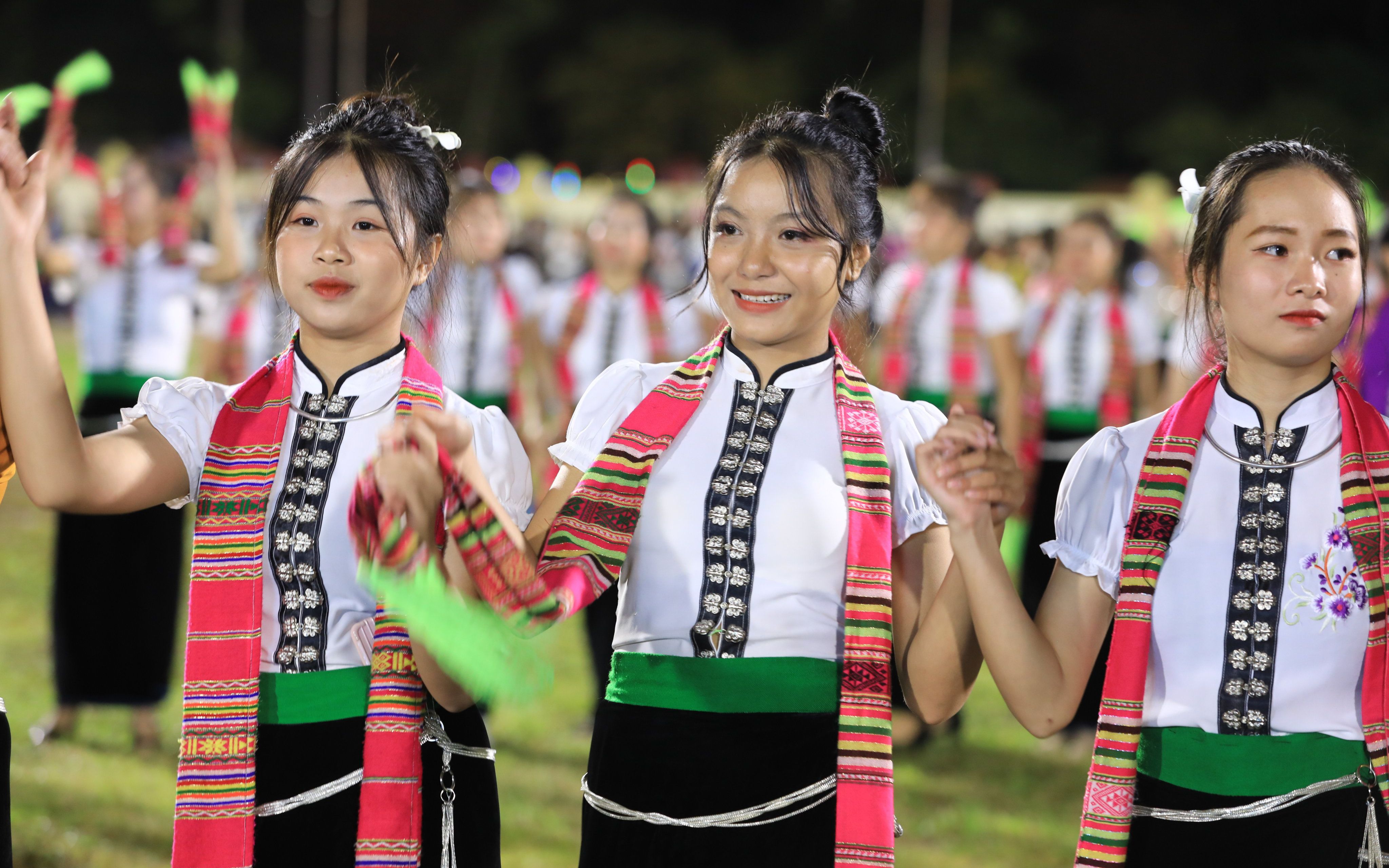
At exactly 5:11pm on December 15, the UNESCO's Intergovernmental Committee for the Safeguarding of the Intangible Cultural Heritage officially listed the art of Xoe dance of the Thai ethnic minority people in Vietnam as an Intangible Cultural Heritage of Humanity. With this event, Vietnamese culture once again shined with the world’s culture in the final days of 2021.
The cultural soul of Thai ethnic minority people in the north-western region
As a form to connect people’s aspirations with the divine world, Xoe has long been an indispensable part in cultural activities and spiritual life of the Thai ethnic group. Xoe reflects Thai people’s world views and their outlook on life, including the world in the heavens, on the earth and of the gods. It also expressed people’s wishes of the help and blessings from the gods for a wealthy and peaceful life.
“Xoe” means a dance with movements that represent human activities in rituals, cultural activities, life and labour. Xoe is performed in ceremonies, weddings, festivals and cultural events of the community.
Artisan Lo Van Bien (from Cang Na hamlet, Trung Tam ward, Nghia Lo town, Yen Bai province), who has wholeheartedly devoted himself to the study of Thai culture, said that living amidst majestic nature and having a diligent and creative spirit in the conquest of nature, Thai ethnic minority people often held hands together and danced around a fire to celebrate their completion of a major work. Xoe dances were formed and developed from there. Xoe has been known as “Xe kham khe” (hand-held dance), which was arisen during the ethnic minority people’s labour, daily life, customs and festivals.
Many Xoe dances simulate their forefathers’ steps to clear the land and fields, plant rice, collect water, throw handkerchiefs and offer wine. All of them describe vividly the reality of life and express the aspirations and dreams of Thai ethnic people in the north-western region.
Thai people believe that “if there are no Xoe dances, rice is not good and the paddy is exhausted”. Xoe dance is a symbol of love for the Thai people, from the love of labour and the love of couples. Therefore, during Tet (Lunar New Year) festivals and holidays and important occasions of the families and villages, especially when welcoming guests, Xoe is usually held as a folk ritual for celebration. Thai people also often perform Xoe dances during the spring festivals, ceremonies to celebrate good harvests and weddings.
The art of Xoe dance was created by people and developed, protected and handed down through generations. Although the dances were revised and modified for performances, they retain the unique cultural features of Thai people.
The community members share their responsibilities and play different roles in organising a Xoe dance. During the rituals featuring Xoe dances such as Kin Pang Then, Xen Lau No and Het Cha, the shamen perform the rituals, sing, play Tinh flutes and guide others to make offerings and dance to express their gratitude and welcome the gods. They also teach other members of their families and hamlets as well as select successors.
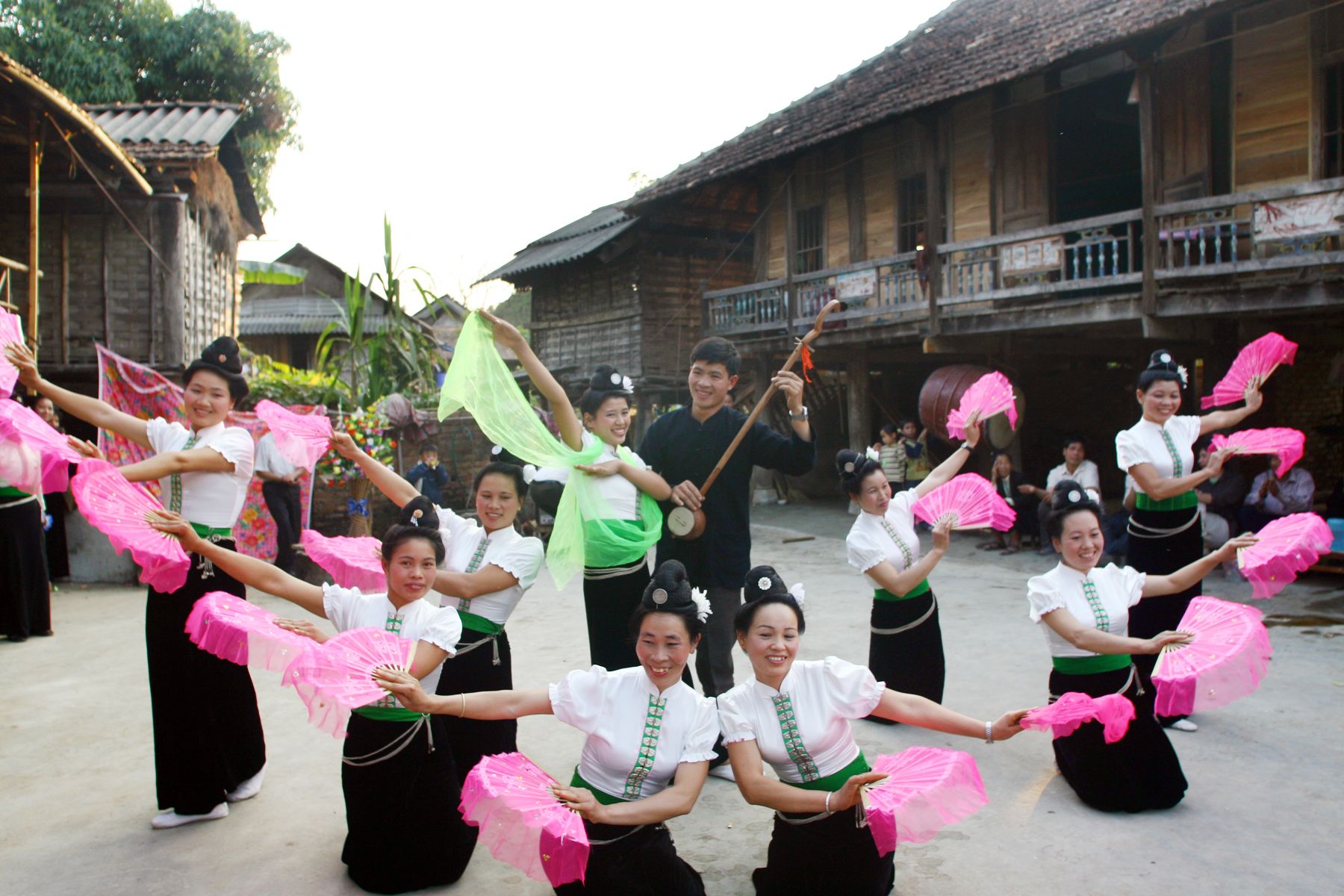
In community-based festivals and games such as ‘Xen ban’ and the cultural weeks of the ethnic minority groups, all people participate in many activities, including preparing offerings, decorating altars, processing food, getting instruments ready, dancing, welcoming and inviting guests to join in Xoe dances.
Male instrumentalists often play ‘pi’ (a kind of bamboo flute), ‘khen be’ (a kind of pan-pipe) and ‘Tinh’ flute; meanwhile, women beat ‘chum choe’ (cymbal) and ‘bang bu’ (a type of wind instrument of Thai people).
The core of the art groups are the artisans who have enthusiastically taught the groups’ members and students at the schools, art universities and colleges.
The meaning of Xoe dance in Thai ethnic minority people's culture (Source: Nhan Dan Television-produced in May 2020)
The meaning of Xoe dance in Thai ethnic minority people's culture (Source: Nhan Dan Television-produced in May 2020)
Preserved Xoe dances
According to the profile submitted to UNESCO, there are three main types of Xoe – ritual, circle and presentational. The ritual and presentational Xoe dances are often named after props used during certain performances such as Xoe khan (dance with scarfs), Xoe non (dance with conical hats), Xoe quat (dance with fans), Xoe sap (dance with bamboo poles), Xoe nhac (dance with music), Xoe gay (dance with sticks), and Xoe hoa (dance with flowers).
The most popular form is circle Xoe dance, wherein dancers form a circle and perform in harmony. The circle Xoe is a collective dance, gradually expanding the circle, attracting everyone to the joy of every New Year, or during festivals. The dancers hold hands, follow rhythmic footsteps, in a friendly, happy and sociable atmosphere.
On festivals, family members and community members come together to prepare offerings, organise ritual activities, play folk games, and join Xoe dances. Thereby, Xoe dance shows the connection between generations, strengthening the close relationship between community members and generations inside and outside the community.
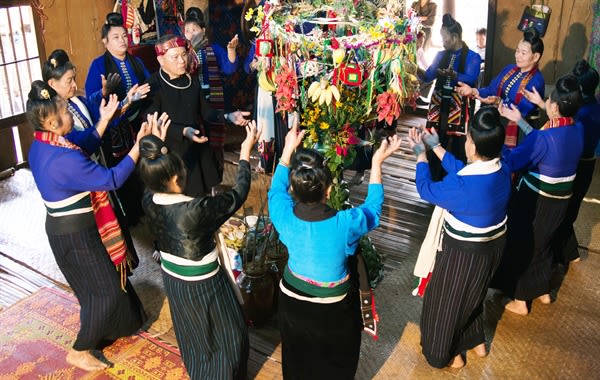
Ritual Xoe dance in Xen Lau No ritual, at Na Va 2 village, Yen Chau district, Son La province.
Ritual Xoe dance in Xen Lau No ritual, at Na Va 2 village, Yen Chau district, Son La province.
Xoe Thai art symbolises beauty, containing the artistic values of dance, music, singing, costumes, cuisine and more importantly, the cultural behaviour of the Thai community. Today, the art of Xoe dance has become a symbol of hospitality, and a mark of ethnic culture, as well as an important cultural identity for the Thai ethnic people in north-western Vietnam.
The basic movements of Xoe dance include raising and opening the hands, then lowering them and clasping the hands of the adjacent person. The dancers follow rhythmic footsteps, slightly arching the chest and leaning backwards. Instruments, including tinh tau (gourd lute), ken loa (traditional trumpet) , khen be (Pan-pipe), drum, gong, cymbal, pi pap (a wind instrument with free-vibrated reed among Thai people), bang bu, mak khinh (Vietnamese traditional musical instruments), accompaniment for dancing in 2/4 or 4/4 rhythms, among the typical tones of the major second, major third, minor third or the perfect fourth and perfect fifth intervals. Although simple, the dance movements symbolise wishes for community health and harmony.
The flexible dance moves in harmony with music, songs, traditional costumes, the sound emitted from the silver jewellery worn around the waist of Thai women, create an art form imbued with the cultural identity of the Thai people in the North-western region.
The Thai people have six ancient Xoe dances, which is the origin of the folk-dance art of the Thai people. The most basic dance is "kham khan moi lau" - an invitation to neighbours to drink rice wine. This is a Xoe dance showing the culture in communication and behaviour of the Thai ethnic group. According to the Thai people's concept, anyone who comes to visit the house is welcomed very respectfully and sincerely.
The second Xoe dance is the "pha xi", which is a dance about the four corners of the Earth, a dance that shows the solidarity of the Thai community. This Xoe dance is meant to express the feelings of each individual in the community. Even though they go to all four directions, they never forget their roots.
The most jubilant and bustling Xoe dance is the "nhom khan", also known as the tossing scarfs dance. Born with the development of cotton-weaving, "nhom khan" dance has the meaning of expressing the joy of people in front of their labour results, and at the same time showing the ingenuity of Thai young girls' hands, with delicate patterns on products of traditional brocade weaving.
The fourth Xoe dance is ‘kham khen’ (holding hands). It is a basic Xoe dance in the folklore dancing art of the Thai ethnic people, as it was created during the labour process at the dawn of humankind. Whenever hunting an animal or cheering with family members, everyone holds hands together and dances around the fire. These are also the first basic movements for the development of other Xoe dances and folk dances alike. At the same time, ‘kham khen’ illustrates solidarity and cohesion in the community, spreading the message that “Let’s dance together to celebrate joy, hold hands and work together to overcome difficulties”.
The fifth Xoe dance is ‘don hon’ (stepping up and down). The dance conveys a message that although life includes both happiness and sadness and is full of ups and downs, everyone still unites with strong beliefs, no matter how things change, people's hearts remain unchanged.
The final Xoe dance is ‘om lom top mu’ (clapping hands while walking in a circle), which is performed to wrap up the celebration. The dance represents joy and happiness at the end of a celebration. People full of joy and cheer, when the night falls, bid farewell to each other and welcome a new day.
Preservation and handing down to younger generations
The art of Xoe Thai dance has been handed down among generations and community members, regardless of age or gender. Practitioners of Xoe dances can learn from each other to rhythmically engage with the music.
In families of Thai ethnic people, children learn Xoe dances from their grandparents and parents when they participate in traditional rituals, weddings, celebrations, and festivals. The shamans have handed down the practice of Xoe dance to their children, grandchildren, and their successors.
The shamen have also taught Xoe dances to their adopted children. At mass Xoe dance performances, veteran and skilled Xoe artisans give instructions to participants on how to step, move arms and feet to embrace the rhythm of the music, as well as how to use props such as hats, scarves, and fans. In addition, Thai ethnic artisans and dancers have also worked together to teach Xoe dances for art troupes, high school students and art school students.
Xoe Thai has been practiced in villages of Thai ethnic communities in assorted districts in four provinces of Yen Bai, Lai Chau, Son La and Dien Bien. The districts include Van Chan, Mu Cang Chai, Tram Tau and Nghia Lo townships in Yen Bai province; Moc Chau, Tam Duong, Sin Ho, Nam Nhun, Muong Te, Phong Tho, Tan Uyen, Than Uyen, and Lai Chau city in Lai Chau province; Muong Ang, Dien Bien, Muong Cha, Tua Chua, Dien Bien Dong, Tuan Giao, Muong Nhe, Nam Po, Muong Lay town, Dien Bien Phu city in Dien Bien province; Thuan Chau, Yen Chau, Sop Cop, Van Ho, Muong La, Song Ma, Quynh Nhai, Mai Son, Bac Yen, Phu Yen, Son La city in Son La province. Of which, the practice of Xoe Thai thrives in Muong Lo district (Yen Bai province), Muong So district (Lai Chau province), Muong Lay district and Dien Bien Phu city (Dien Bien province), and Thuan Chau district (Son La province).
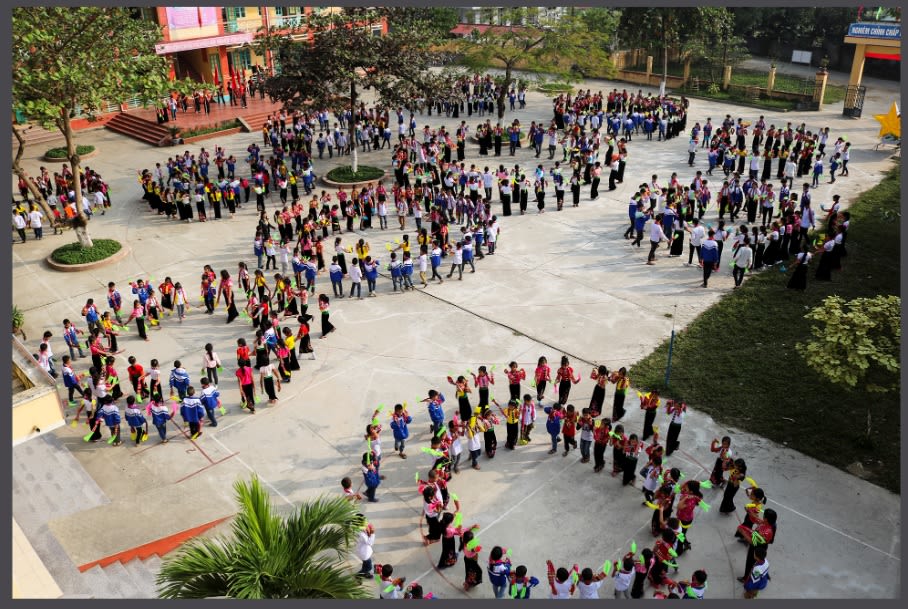
Xoe Thai dance being taught at schools in Yen Bai province as an effort to preserve traditional culture.
Xoe Thai dance being taught at schools in Yen Bai province as an effort to preserve traditional culture.
Since the 1990s, Thai ethnic communities in the four provinces have taken measures to protect the art of Xoe Thai dance, including establishing Xoe dance art troupes, encouraging artisans and local researchers to make records and publish documents on the history and development of Xoe Thai, as well as types of Xoe dances, their settings, and cultural forms related to Xoe Thai. Folklore artisans, and community members who have certain knowledge and understanding about Xoe Thai have also been invited to teach Xoe dances to younger generations, including preschool children and students at high schools and art schools.
Many individuals have actively joined hands to revitalise ancient Xoe Thai dances, which they have learned from their grandparents and parents. They include 86-year-old Lo Van Lanh in Yen Bai province who opened classes to teach how to play ‘tinh tau’ (gourd lute) and ‘khen’ (pan-pipe), 56-year-old Do Thi Tac in Lai Chau province who spent her own money to build a house on stilts to display Thai cultural heritages and teach Xoe Thai to locals in Than Uyen town.
According to statistics, 180 Xoe Thai performing art troupes have been established in Yen Bai province, while the figure recorded in Dien Bien is 1,273, Lai Chau sees over 100 and Son La province is estimated at roughly 1,700. The team members have played an important role in performing and preserving Xoe Thai art throughout the localities.
The Ministry of Culture, Sports and Tourism recognised Xoe dance as the national intangible cultural heritage in 2013 and 2015.
In 2015 and 2019, the President presented the “Meritorious Artisan” title to nine artisans in four provinces for performing arts related to Xoe dance.
At the same time, the People's Committees of four provinces approved a number of projects to collect and popularise several Xoe dances and provide financial support to practice and buy musical instruments for cultural teams. Every year, the People's Committees of the four provinces also organise cultural weeks, cultural festivals of ethnic minority groups, performances and contests featuring Xoe dance.
The proposed dossier of Xoe dance of Thai ethnic people has met all the five criteria set by UNESCO: (i) Xoe dance is an intangible cultural heritage as defined in Article 2 of the 2003 Convention; (ii) The accreditation will help ensure the popularity of Xoe dance and awareness of the importance of intangible cultural heritage; (iii) The proposed conservation measures are capable of preserving and promoting the heritage; (iv) Xoe dance was nominated with the free will and consent of the relevant community; (v) Xoe dance has been included in the list of the intangible cultural heritage of a UNESCO member country and has been nominated by that member under Articles 11 and 12 of the 2003 Convention, according to UNESCO
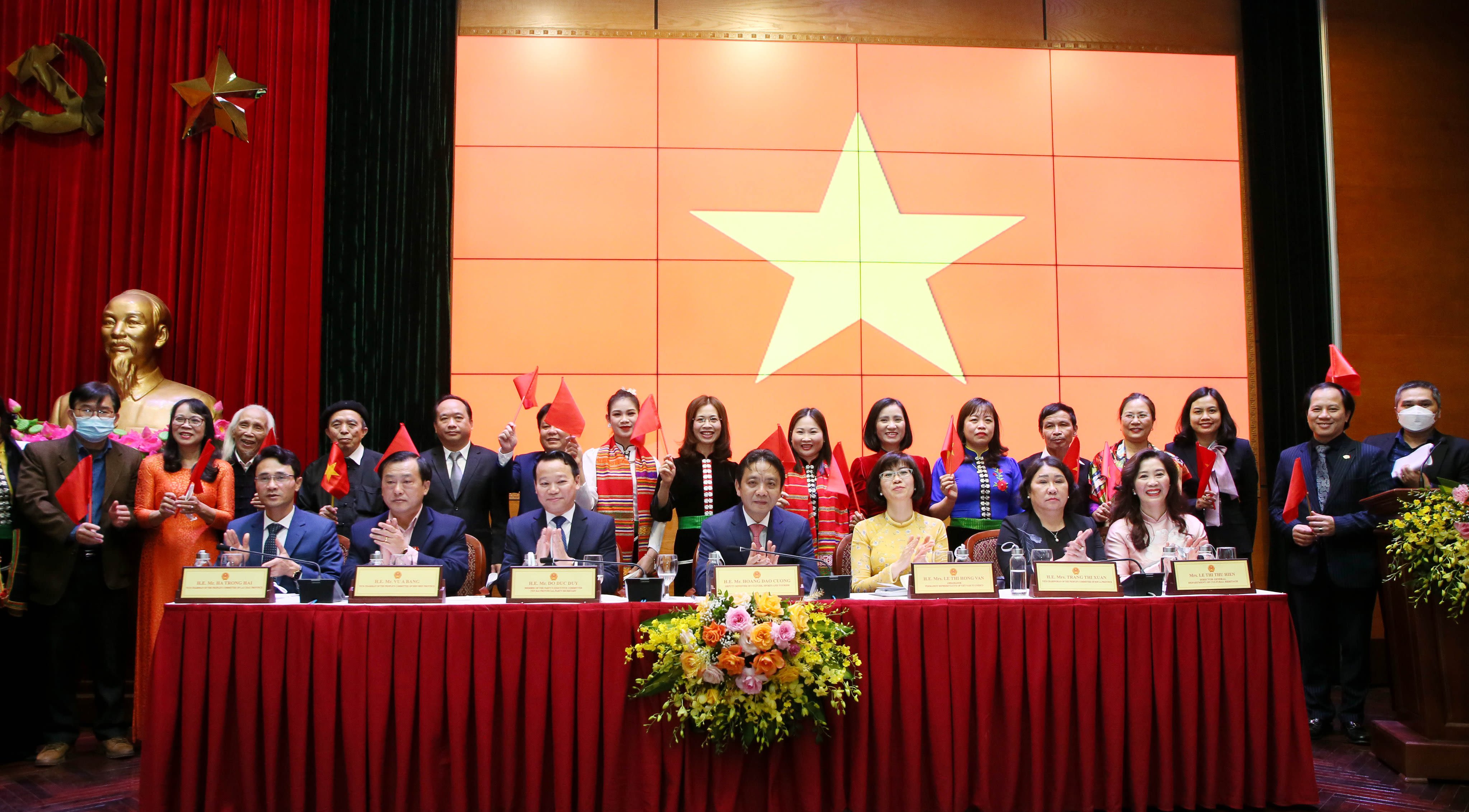
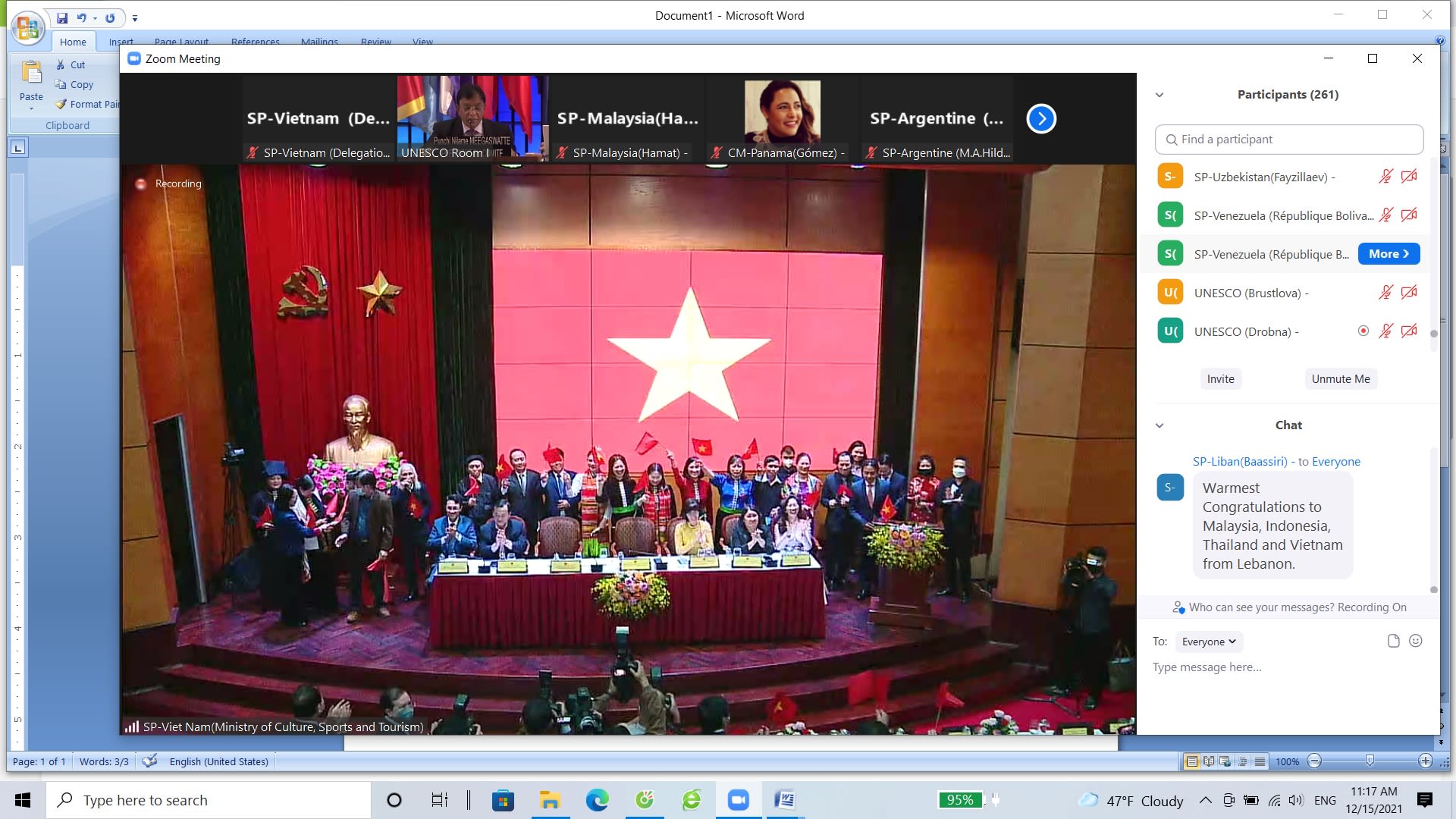
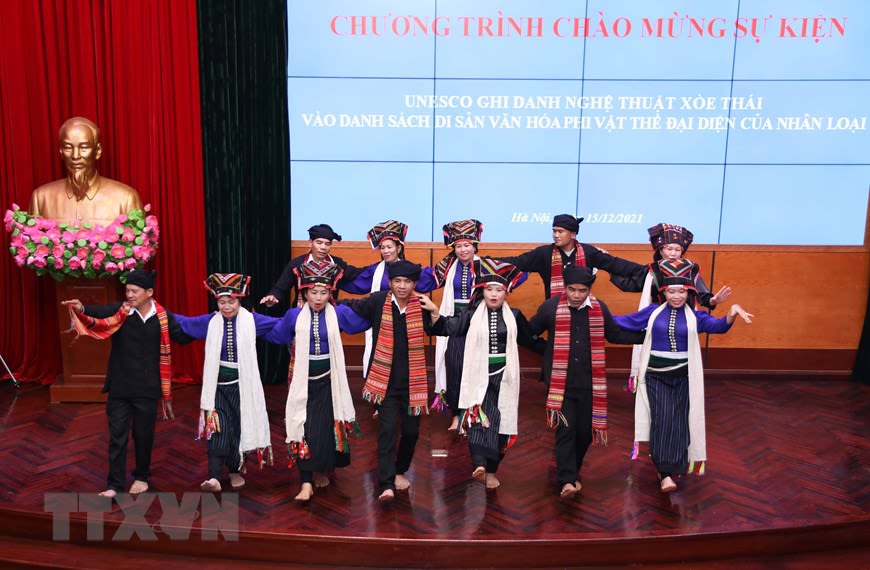



The moment Vietnam's Xoe Thai art officially named on the UNESCO list of Intangible Cultural Heritage of Humanity at the Ministry of Culture, Sports and Tourism in Hanoi. (Photo: The Ministry of Culture, Sports and Tourism)
The moment Vietnam's Xoe Thai art officially named on the UNESCO list of Intangible Cultural Heritage of Humanity at the Ministry of Culture, Sports and Tourism in Hanoi. (Photo: The Ministry of Culture, Sports and Tourism)

At the virtual ceremony to announce the accreditation of Xoe dance as the Intangible Cultural Heritage of Humanity (Photo: The Vietnam Delegation to UNESCO)
At the virtual ceremony to announce the accreditation of Xoe dance as the Intangible Cultural Heritage of Humanity (Photo: The Vietnam Delegation to UNESCO)

Artists performing the Xoe dance at the accreditation ceremony (Photo: The Ministry of Culture, Sports and Tourism)
Artists performing the Xoe dance at the accreditation ceremony (Photo: The Ministry of Culture, Sports and Tourism)


Artists burst with joy at the accreditation ceremony (Photo: The Ministry of Culture, Sports and Tourism)
Artists burst with joy at the accreditation ceremony (Photo: The Ministry of Culture, Sports and Tourism)
Experts’ comments
Xoe Thai has become the 14th Intangible Cultural Heritage of Vietnam recognised by UNESCO, demonstrating the contribution of Vietnam towards the goal of preserving and boosting the heritage values that UNESCO is promoting.
Deputy Foreign Minister Dang Hoang Giang, chairman of the National Commission for UNESCO, emphasised that Xoe Thai has contributed to the nation's colourful and attractive cultural picture, consolidating and enhancing the soft strength of Vietnam.
This shows the honour of Vietnam, contributing one more heritage to humanity's cultural treasure and contributing to the realisation of the common goals of the United Nations, including the 2003 Convention on the protection of intangible cultural heritage. From now, Xoe Thai is not only a unique cultural feature of the Thai ethnic community in the Northwest region and of the Vietnamese people, but also becomes a heritage of global humanity, protected and promoted by the international community.
Sharing the good news about Vietnam's Xoe Thai, being recognised by UNESCO as the Intangible Cultural Heritage of Humanity, Ambassador Le Thi Hong Van, Chief Representative of the Vietnamese Delegation to UNESCO, said that the accreditation is not only the pride of the Thai community in the Northwest mountains, but also the common joy throughout Vietnam, contributing to introducing the national cultural quintessence, promoting the image of the Vietnamese country and people with dynamic development and rich traditions imbued with national cultural identity, affirming the international appreciation for this heritage as well as Vietnamese cultural values.
This is the result of the efforts and close coordination of the local community and authorities, having the heritage in addition to the experts’ advice on heritage, the active direction of the Ministry of Culture, Sports and Tourism and the coordinating role of the National Commission for UNESCO, the Ministry of Foreign Affairs, and the Permanent Representative of Vietnam to UNESCO in proposing and selecting ideas and completing the dossier.
Witnessing the moment when Vietnam's Xoe Thai was officially recognised by UNESCO, artisan Lo Van Lanh cannot hide his emotions, saying that: “We are very touched and proud when Xoe Thai is honoured internationally. In the circle of Xoe dance, young and old, women and men, rich and poor all become equal. Everyone is happy to hold hands and mingle in the circle of Xoe dance.”
UNESCO's official accreditation of Xoe Thai on the list of "Intangible Cultural Heritage of Humanity" boasts great meaning and opportunity to preserve and promote the artistic value of this traditional and unique dance, as well as its contribution to affirming the diversity, values and identity of Vietnamese culture in the common cultural picture of mankind.
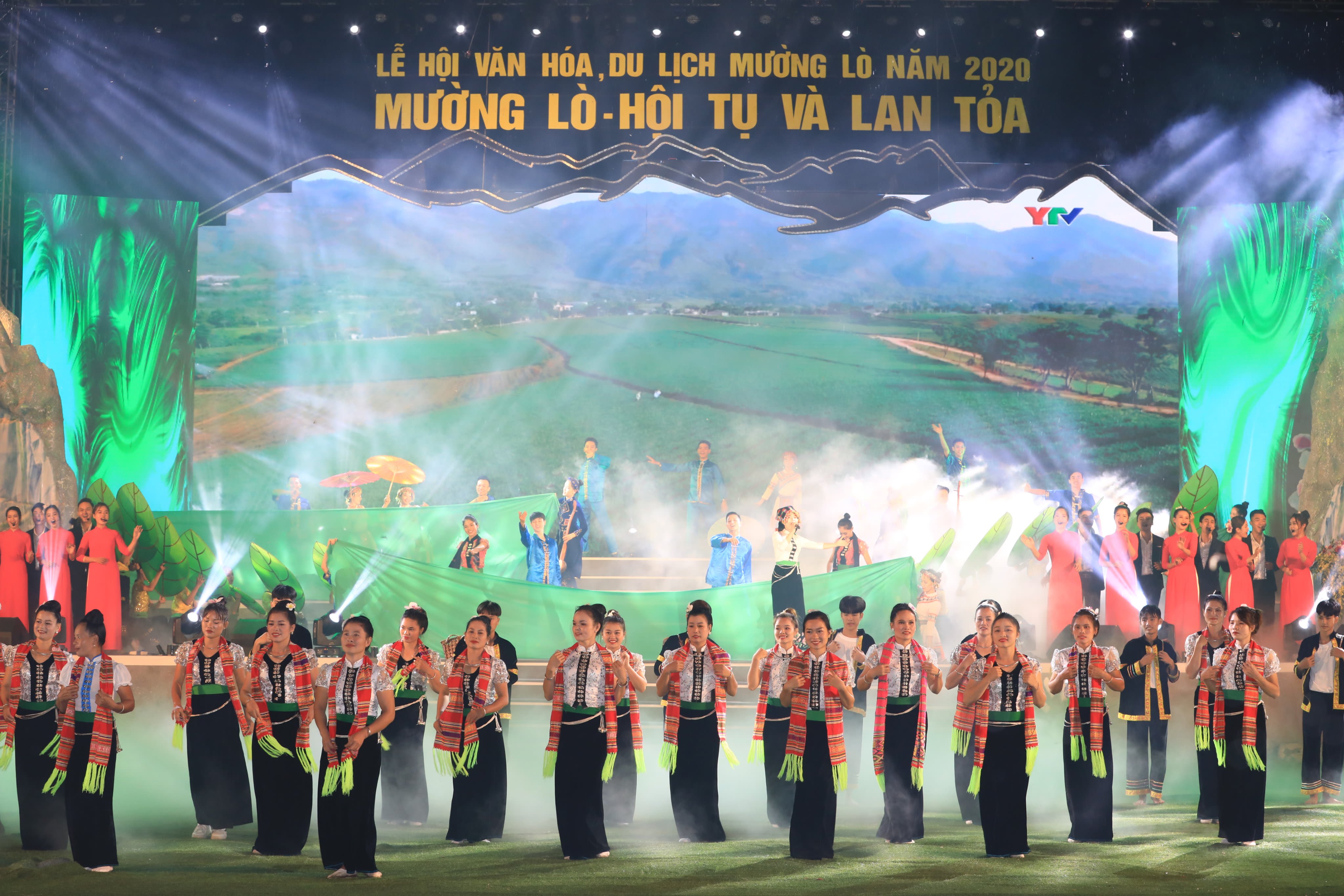
Production Manager: HONG MINH
Content: TUYET LOAN - NGUYEN TRANG
Translation: NDO
Design: NGUYEN TRANG, DANG PHI, PHAN ANH
Photos: THANH DAT, the Ministry of Culture, Sports and Tourism, the Vietnam Delegation to UNESCO, VNA, VOV, Yen Bai Newspaper
